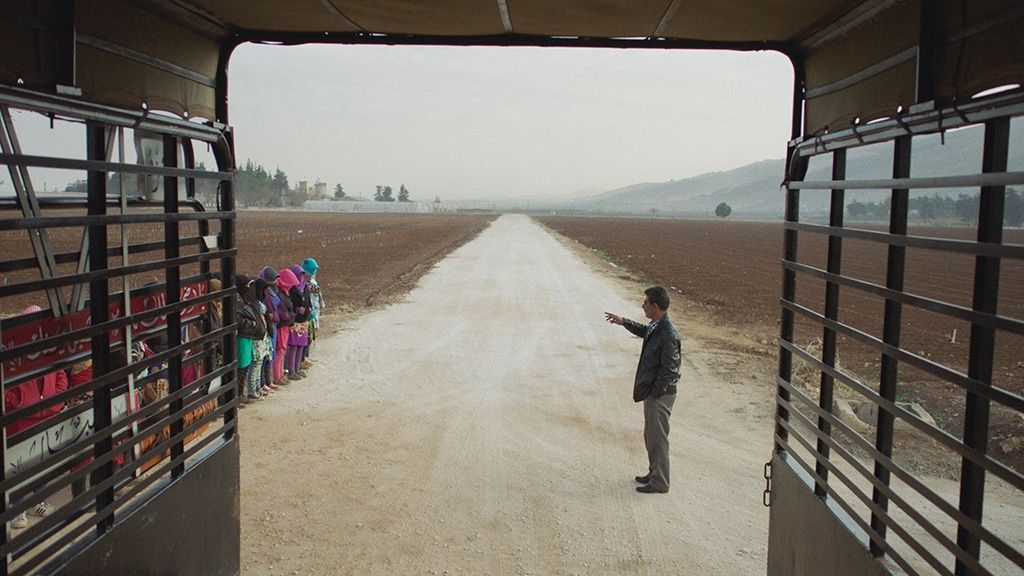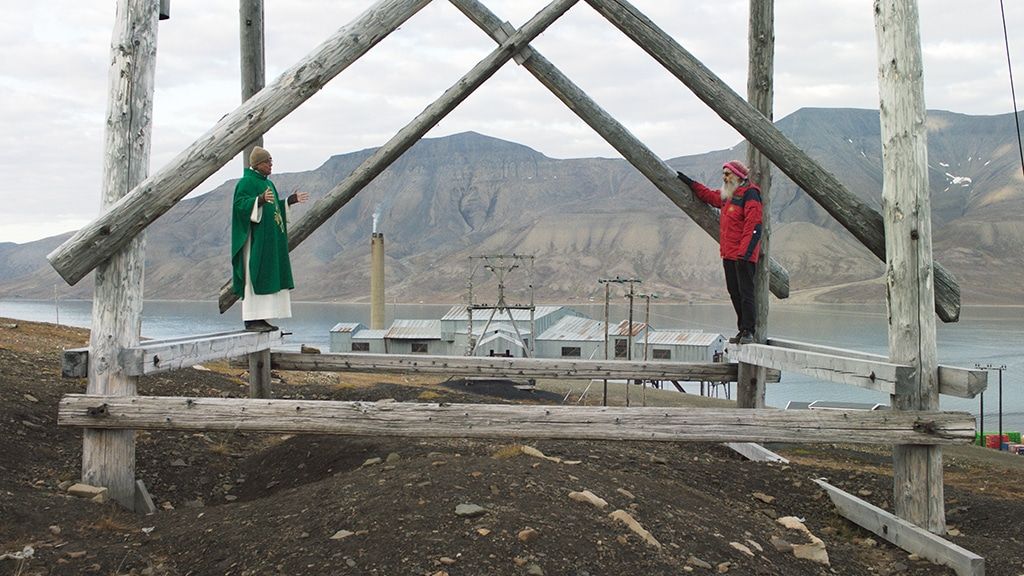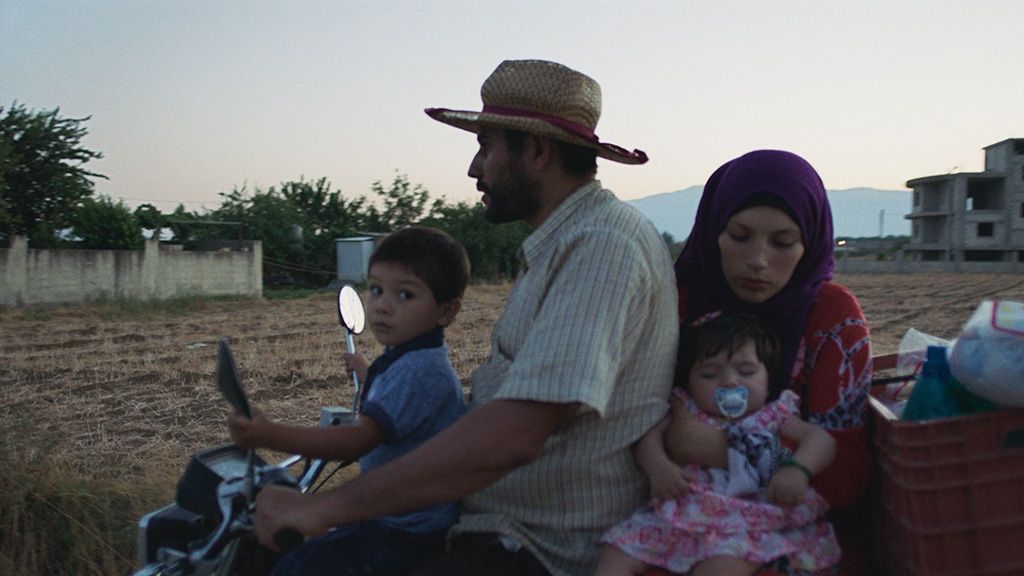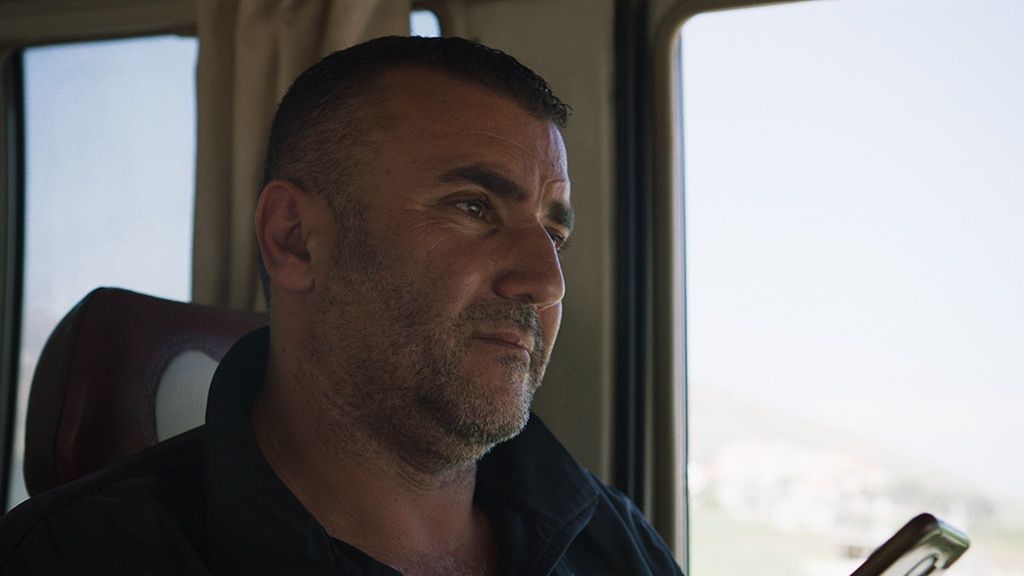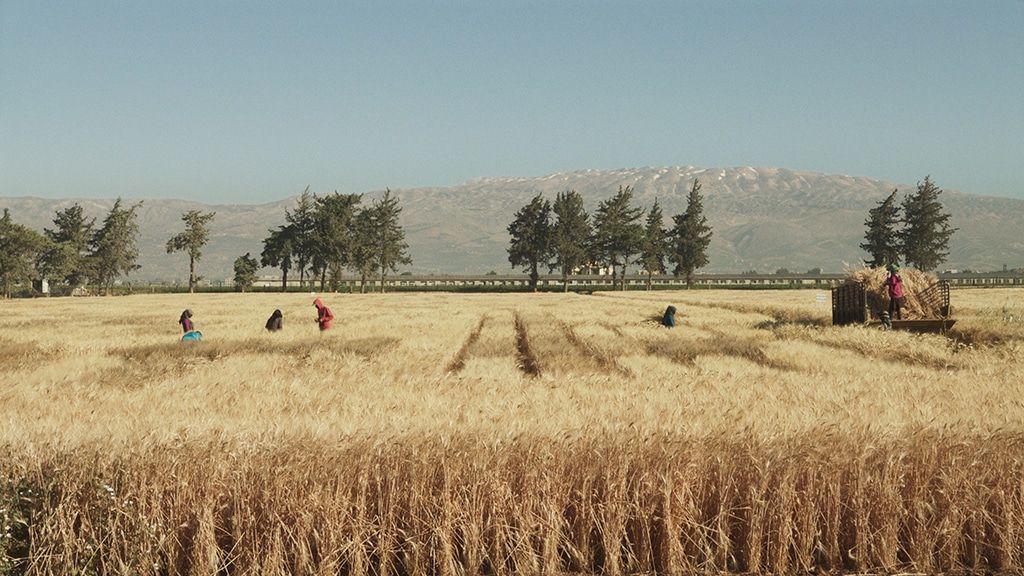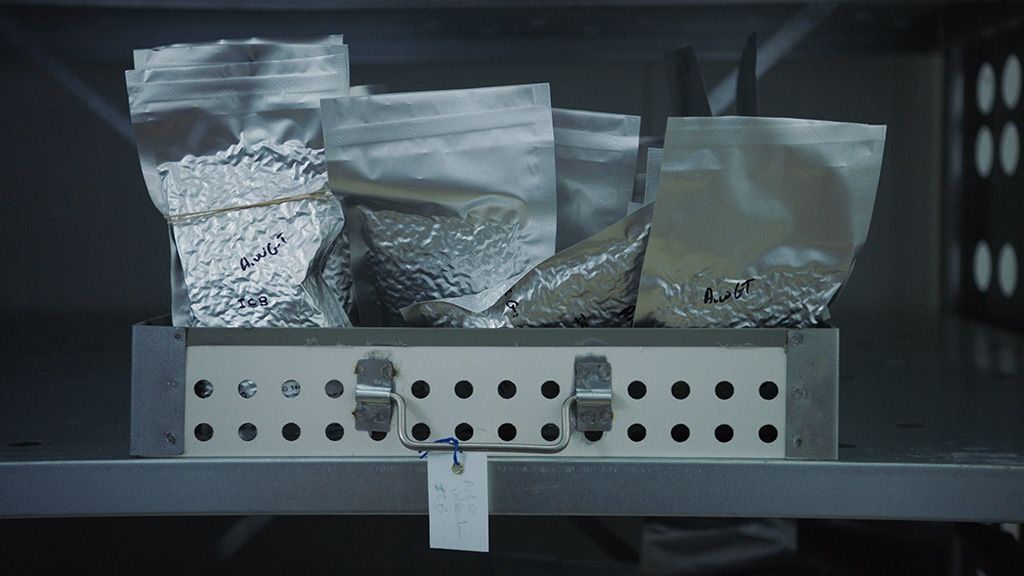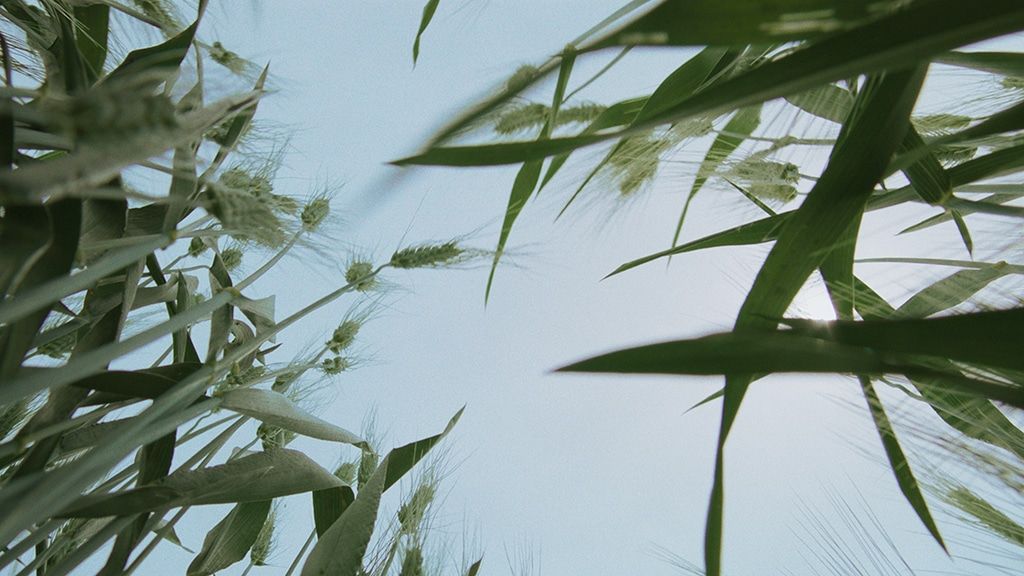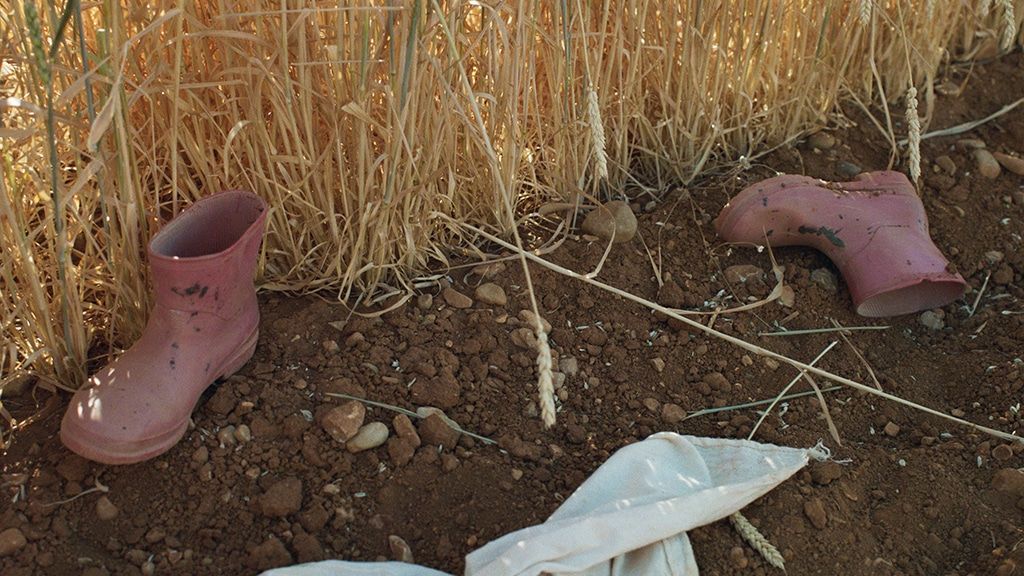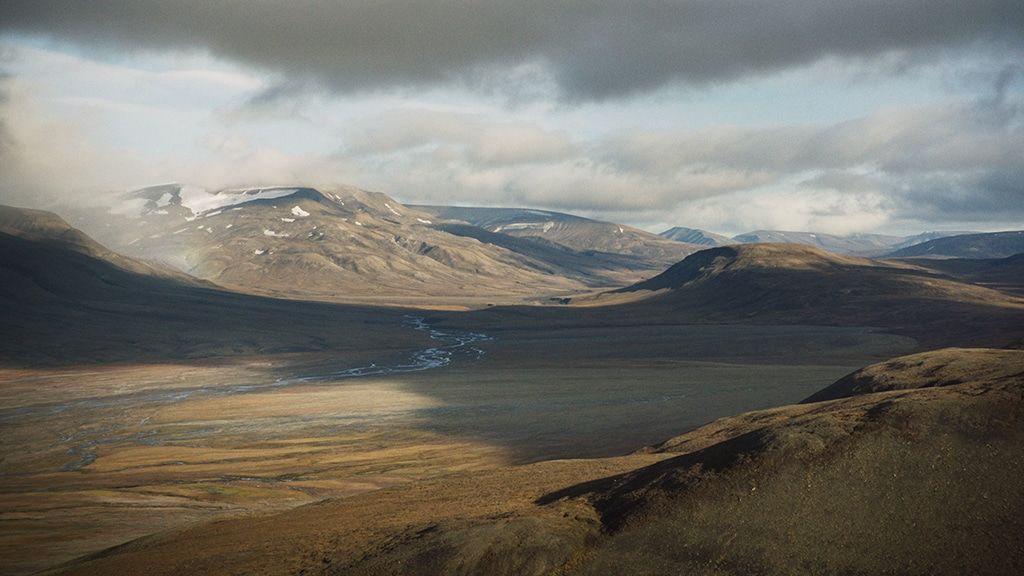The atmosphere changes. We are presented with an idyllic view of green plants in a field moved by subtle wind with an accompanying blue sky and sun, and a voice begins to narrate the story:
“There was a time when farmers never thought about buying seeds. They saved grains from season to season, selecting and adapting their own varieties. In the early 20th century, the development of industrial agriculture transformed farming practices and seed circulation. What follows is an account of twelve months in the lives of people from Lebanon, Syria and Norway who engage in land in various ways. These encounters occur on the path of the transaction of seeds between two distant semi-arid geographies. The transaction was initiated by an agricultural research centre that used to be based in Aleppo, but due to the Syrian revolution had to move to Lebanon. The centre had a gene bank, a storage facility of seeds collected from farmers and the wild. This significant gene bank was left behind in Aleppo. Instead, they decided to create a duplicate collection from backup copies which they had stored in a vault, on an island in the Arctic Ocean.”
Scene cut.
The next scene takes us to Beqaa Valley in Lebanon to one of the ICARDA seed centres. A man in front of the building cuts some planks. Women inside the lab are completely focused on work: weighing the seeds, using vacuum seal machines to pack them, making reports, putting the packages in the transport boxes. The camera tries to catch all of the details of this process.
I’m describing these first scenes to draw attention to the composition of Wild Relatives; the play of subtle contrasts remains the dominating rule of the frames, aesthetics, and of the atmosphere of the film as a whole. This fragility of contrasts is needed here, as the documentary wittily uses conventional fairytale elements. Artists’ decisions have specific reasons and consequences. The convention of the fairy tale here allows the use of certain motives; for instance, the above-mentioned opening with the voice-over narrative, or the talk between science (the scientist) and faith (the priest). Additionally this narrative trope introduces a very particular concept of time that focuses either on the past or on the future (there will be one exception escaping from that rigour of time, but I will get back to that later). Even if the scenes in the movie are happening in the present, people appearing in the documentary often refer to a world which no longer exists, or to the world which will soon cease to be – and it is not a coincidence that the seed banks are called doomsday facilities.
Can one imagine a world in which seeds are as precious as gold? Or a world without seeds?


